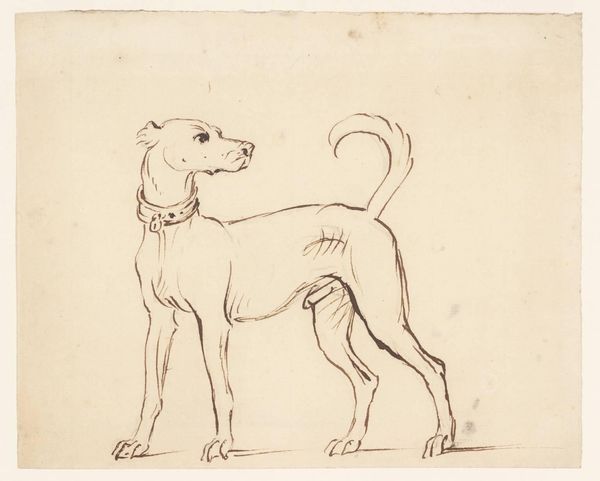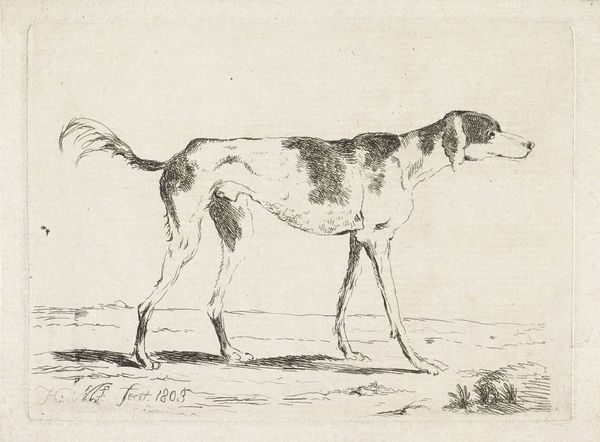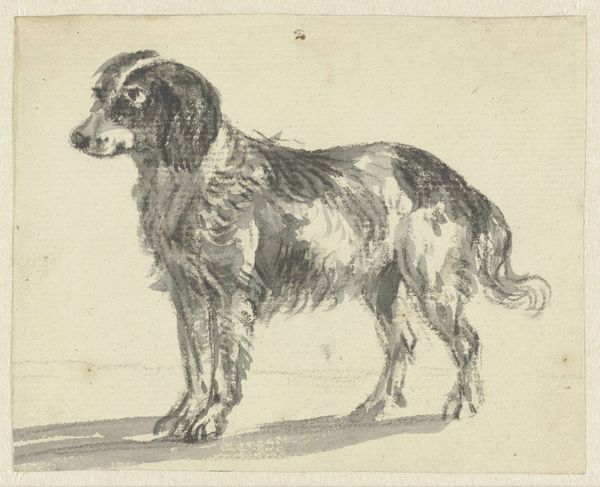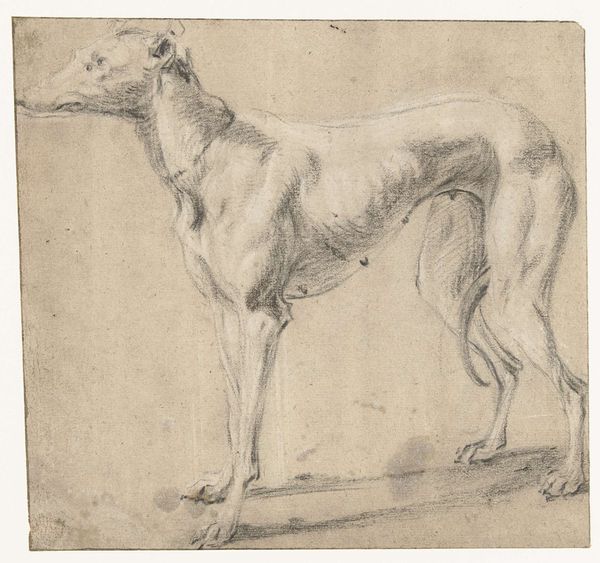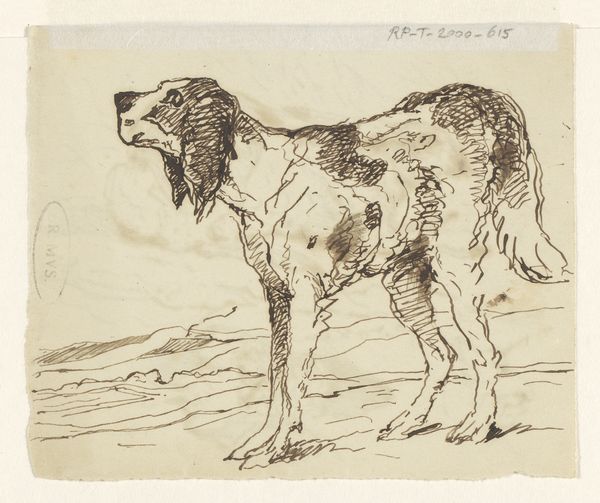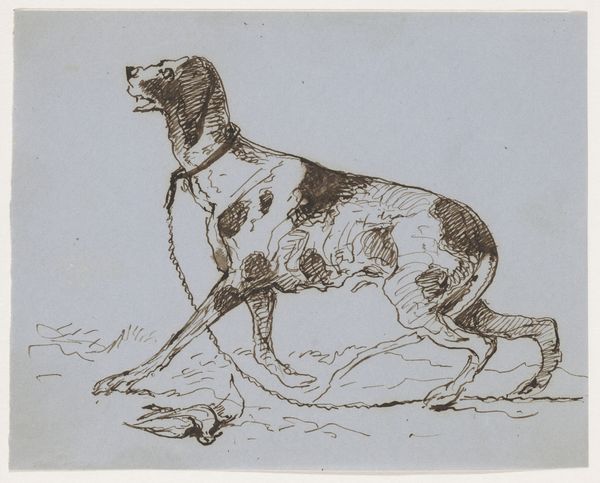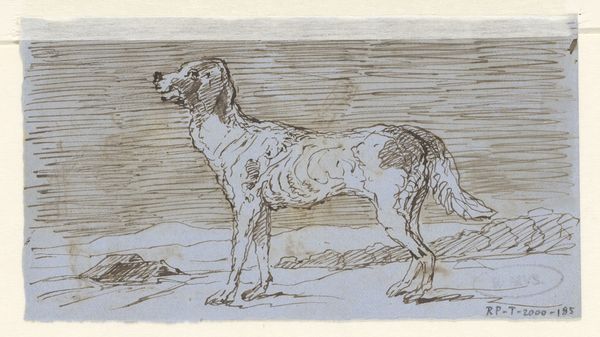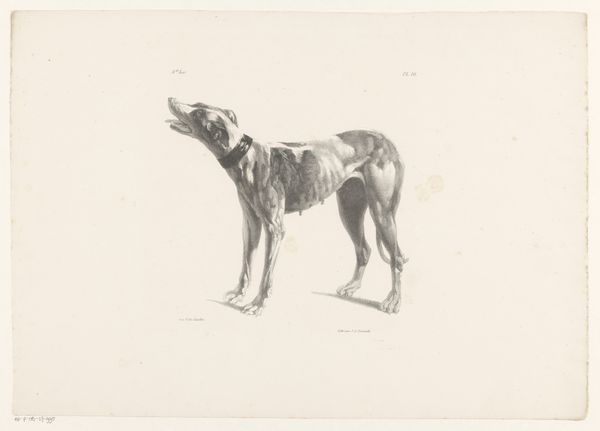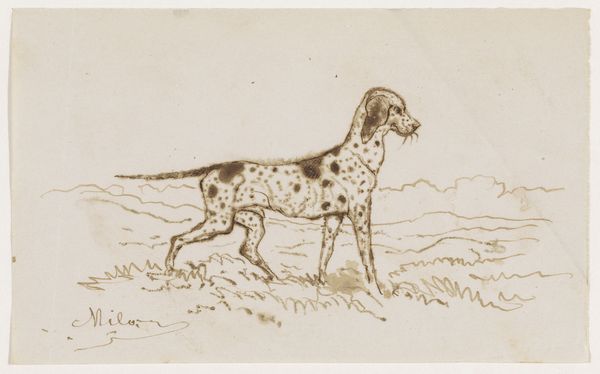
drawing, paper, ink, pen
#
drawing
#
pencil sketch
#
landscape
#
figuration
#
paper
#
ink
#
pen-ink sketch
#
horse
#
pen
Dimensions: height 72 mm, width 84 mm
Copyright: Rijks Museum: Open Domain
Editor: Here we have Johannes Tavenraat's "Standing Horse," likely created between 1840 and 1880. It’s rendered in pen and ink on paper. I’m struck by the horse’s somewhat rigid posture and how it dominates the composition, though the background is indeed there. How do you read this stark simplicity? Curator: It's a fascinating study. The simplicity you mention is precisely where its power lies. I encourage you to think about how, during this period, the image of the horse was heavily coded with ideas of labor, class, and even colonial power. Beyond its symbolic load, it's a raw depiction, which invites considerations beyond the classical equestrian portraiture that was so prevalent. Editor: That's really interesting. So, it's not just about depicting a horse but about the societal baggage it carries? How does the quickness of the sketch influence this? Curator: Precisely. Think about the swift lines. Does this immediacy signal a move away from formal commissions towards a more personal, perhaps even critical, exploration of the subject? It avoids romanticizing the animal, perhaps pointing towards the reality of the horse’s role. Editor: So, the imperfections are actually saying something about the animal's real place in society? Curator: Exactly. The way Tavenraat deconstructs the traditional heroic representation of the horse might be considered a form of quiet resistance to prevailing artistic and social norms. It poses a question, a visual critique of power structures that were rarely questioned. Editor: I never thought a simple horse sketch could be so complex. It's like, it’s a horse, but it’s also about so much more. Curator: It is indeed. By stripping away the pomp, Tavenraat lays bare the social narratives embedded in even the most seemingly straightforward images, reminding us that art is always in dialogue with its context. I find that insight quite poignant.
Comments
No comments
Be the first to comment and join the conversation on the ultimate creative platform.
